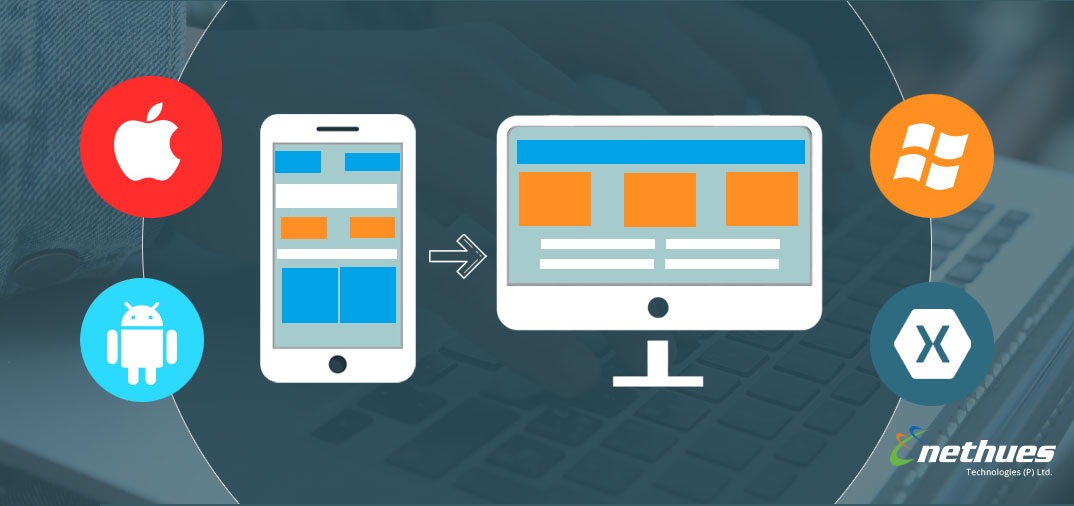Evolution, growth or whatever you might call it, is a crucial aspect of our lives. A person isn’t the same today as he was yesterday and won’t be the same tomorrow too. We are constantly evolving with time.
Well, this theory isn’t just limited to living beings but technology as well. And we know it well!
Coming to the mobile app development world, how can native apps be left behind,. Native Apps too. Yes! Native Apps
Many popular startups from the last 10 years began as native apps. As they proved themselves out, they expanded to the web. Instagram and Uber, for example, had no web app components when they first launched. Since then they’ve launched web versions of their services that offer functionality more in line with their native counterparts. These businesses have grown to build a parallel industry that utilizes the next-gen ways to communicate services and facilitate events through their valuable native apps. Some good examples of native apps that escalated to web platforms WhatsApp, Uber, Telegram, Instagram
The question is,
How Web Apps Differ from Native Apps
As an owner of a Native Application the first question hovering in your mind would be Why? Why should I expand my Native App to a Web App? However, there are crucial reasons that vouch for the transformation of a native app to a web app:
- To increase outreach to the audience that the native app isn’t catering to.
- To capture other use cases better suited for user experience, with perks of enhanced screen real estate.
- To allow your user a choice of more channels to reach your app.
It is important to note that launching your native app on the web is not as simple as copying the existing app on to the web. A developer needs to work on new use cases and design aspect for the web version of a native app. Additionally, considerations like how the new web app will interact with the native app, changes in backend architecture and testing of the new web app against the many browsers, device, and operating system combinations that the user might use it with need planning.
Understanding Use Cases for Web Apps
There will be times when your web and native use cases won’t match, and it is OKAY! Most businesses decide to launch their native app on the web to reach out to a new user base or offer conveniences of the bigger screen and lesser load times to its existing users. It is simple to conclude that the transition has ‘users’ at its heart.
The developers need to come up with a web app that replicates the design feels of the existing native app but suits the needs of a user accessing it through the web. A general user survey and testing can help you decide which features of your native app need to copy onto the web app. This information will further help you make important decisions about the cross-platform experience, and backend architecture etc.
Your web and native use cases will be out of line sometimes. While your web app looks, feels, and acts like its current native counterpart, it can be created for web users and their specific individual goals.
Keeping in mind the goals and context for both user bases, you can decide to do things a little conversely when building the web app.
One evident difference between the two is the increased screen area available on a web app as opposed to a native app. That’s more space to experiment with. That added space could imply a deeper interactivity with features than on your native app.
It could also make room for a different navigation plan, with more visual elements, larger elements, or more content in general. While you have more screen area in a web app, how you use that real estate is as essential as on the smaller, native app to the web version of your app. Check what details you put “above the fold,” and ensure that your user gets a clear call to action.
You’ll likely find yourself in this situation as you move from native app to the web. Using your user research, you will need to decide which of your current native app’s traits should be altered to the network. Your use cases will also present your design, cross-platform experience, and backend architecture options down the road.
Designing: Web Application vs Native Application
Typically, web apps are developed in JavaScript, CSS, and HTML5 and run within a browser. Unlike iOS or Android app, there’s no software development kit available for the developers to use. However, there are frameworks available like React, Angular and Vue. js that developers can use for a quick start.
Usually, web apps are simple and quick to develop nevertheless, it depends on your demand. There are still design-specific components to address while integrating a web counterpart.
In native apps we faucet or perform different gestures like swipe, pinch or long press to complete our action. On the other hand, a web application works over the browser with mouse clicks. So, while building the web app you have to consider how your potential users going to access.
Web apps are mainly utility-based applications that focus on specific tasks. It experiences a longer user session as compared to Native apps. It is important to optimize the web app and make it responsive to adjust the website elements depending on the device screen.
When it comes to designing native apps and web apps, developers face different problems for each type of app. Not only web apps bring to the table more screen space, but the way a user accesses info on a web app also differs a great degree from native apps.
No matter how similar both apps look visually, there are many design specific concerns that need to be addressed when you are launching a native app on the web. For example, the extra screen space available on web app opens up opportunities to play with features, visual element addition, elaborate content and what not.
The second major difference in a web app and a native app is the need to ‘click’ on icons and not ‘tap.’ Many different types of taps, presses, swipes and pinches make up the native app user experience for a user. Things are radically different in web apps and are sorted with simple clicking.
Native apps promise a seamless, intuitive experience to users with prompt responses to their actions. Developers often face difficulty in recreating similar experiences in web apps as they have to deal with extra hardware, browsers and related elements.
Users face a web app screen for the longer duration of time than native apps. This creates a need for use of proper colours and font size to increase engagement time and avoid strain to eyes. An ideal case scenario would be to choose a custom font that works well for all platforms.






